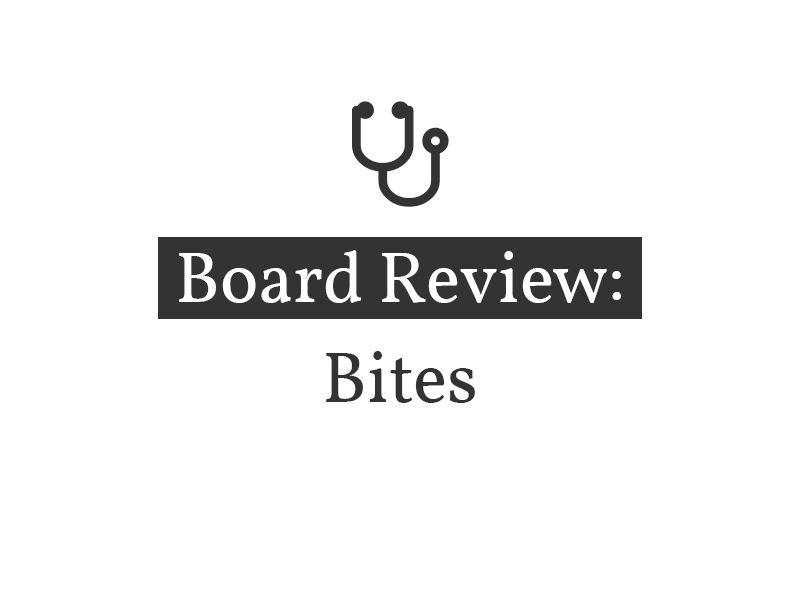SimWars
This post is part of a series developed in preparation for participation in ACEP SimWars. It contains a review of several prominent emergency medicine topics which may be relevant for board preparation. Unless otherwise cited, content is based on HippoEM videos.
- Toxicology
- Dermatologic Emergencies
- Acid-Base Disturbances
- Thyroid Emergencies
- Adrenal/Pituitary Emergencies
- Oncologic Emergencies
- Bleeding Disorders
- Hematologic Emergencies
- Submersion Injury
- Radiation Exposure
- Hypothermia
- Heat Emergencies
- Electrical Injuries
- Bites
- Altitude and Dysbarism
- Pediatric Emergencies
Mammalian
- Human: Eikenella corrodens
- Dog/Cat: Pasteurella multocida
Athropod
- Hymenoptra (bee, wasp, hornet, ant)
- Venom: histamine reaction, anaphylaxis
- Symptoms
- Local: pain, swelling, pruritus
- Toxic (<48h): multiple bits, N/V, syncope, HA
- Anaphylaxis: minutes
- Delayed (10-14d): serum sickness, fever, arthralgia, malaise
- Management
- Remove stinger
- Wash, ice, anti-histamine, analgesia
- Brown recluse (violin pattern)
- Location: Midwest, wood pile
- Symptoms: initially painless, cytotoxic venom may cause necrosis
- Management: supportive, Tdap, delayed debridement if necrotic
- Black widow (red hourglass)
- Venom: neurotoxic, ACh, NE
- Symptoms: painful, erythema, muscle contractions (“acute abdomen”), localized diaphoresis from ACh release
- Management: analgesia, benzodiazepines, antivenom for refractory pain (may cause anaphylaxis)
Snake
- Crotalid (rattlesnake, copperhead, cottonmouth, collectively “pit vipers”)
- Venom: cytotoxic, hemorrhagic
- Symptoms: erythema/edema (ecchymoisis/bullae), nausea/vomiting, metallic taste
- Labs: DIC
- Management
- Immobilization (no tourniquet)
- Local wound care, Tdap
- CBC, INR, fibrinogen (q2h)
- Antivenom (Crofab 4-6 vials): given until symptoms or laboratory abnormalities arrest
- Compartment syndrome: avoid surgery
- Elapidae (coral snake, “red on yellow”)
- Venom: neurotoxic, delayed 10-12h
- Symptoms: no significant local reaction, bulbar palsies, respiratory depression
- Management: no antivenom, supportive care, intubation
Cnidaria (jellyfish)
- Symptoms: local pain, erythema, pruritus
- Management: 5% acetic acid, alcohol, remove stinger
- Antivenom for box jellyfish
Stingray
- Symptoms: local pain, edema
- Management: Local wound care, Tdap, hot water immersion, antibiotics for Vibrio (cephalexin with doxycycline)
Vibrio vulnificus
- Symptoms: necrotizing fasciitis, in cirrhotic primary septicemia after ingesting shellfish

